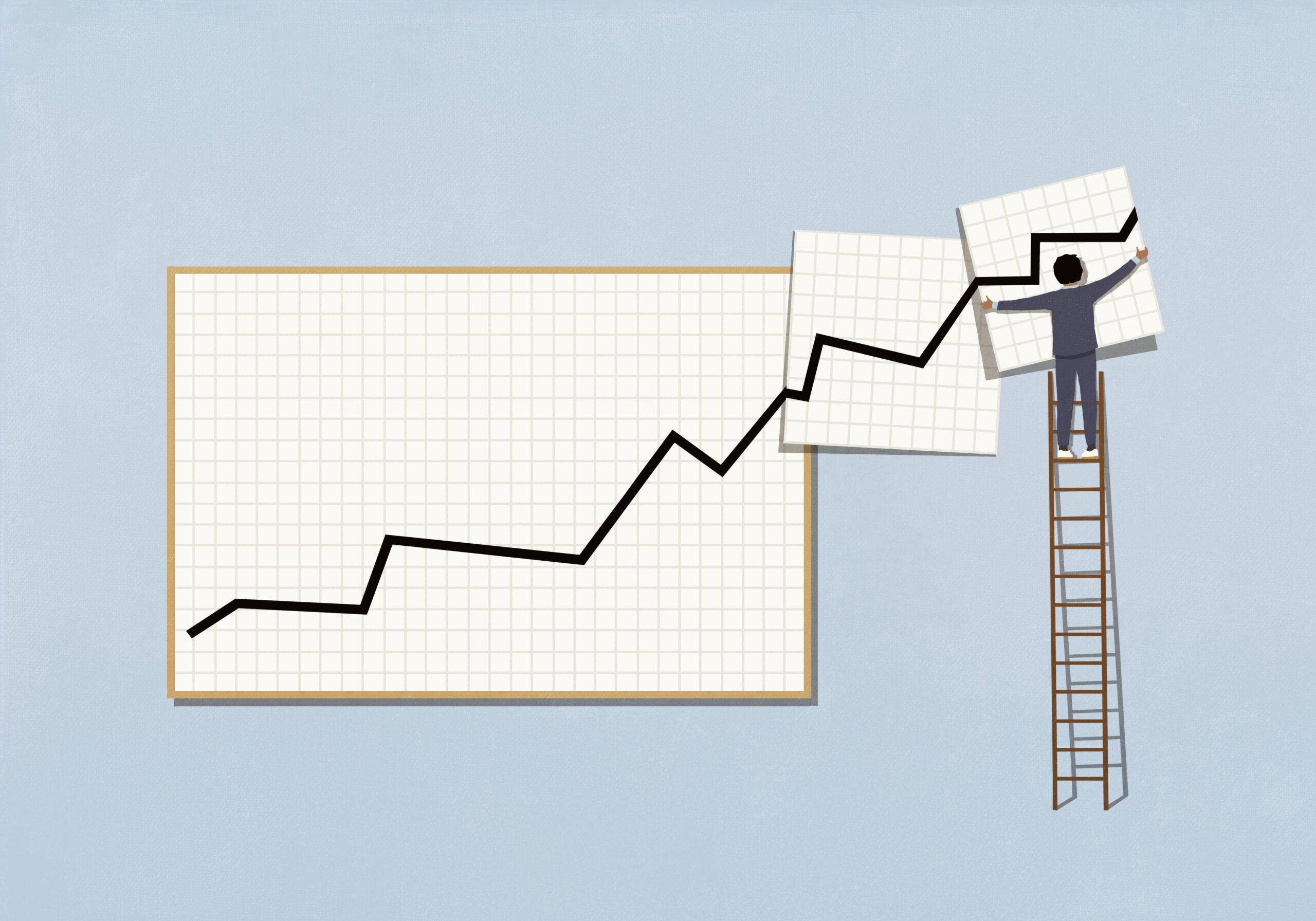This article/post contains references to products or services from one or more of our advertisers or partners. We may receive compensation when you click on links to those products or services
When it comes to investing, there is no one-size-fits-all approach. Every trader has their own style and strategy. While some are drawn to day trading, swing trading is more appealing to others. Still, others might utilize a combination of the two.
So what is swing trading? Swing trading predicts short- and medium-term market movements using technical analysis to find possible trends. Let’s dig in and find out more about swing trading, such as when it’s used, some strategies for swing traders, and the risks and benefits.
The Short Version
- Swing trading is a strategy that analyzes trends in hopes of capturing short- and medium-term gains.
- Unlike day trading, swing traders will hold positions at least overnight.
- Swing traders use technical analysis to find trading patterns and employ a number of different strategies, such as moving averages, volume, ease of movement, and others. Like day trading, swing trading is risky and is best for experienced investors.
What Is Swing Trading?
Swing traders analyze trading patterns to predict short and medium-term movements. The approach is very similar to day trading but the biggest difference is swing trading focuses on investments over a few days or weeks rather than just one day.
Swing traders use technical analysis to find trading opportunities. They may also use fundamental analysis to support their research. A swing trader will try to find a trend and invest in that trend’s direction to make a profit.
Like with all investing, swing trading carries some risk, especially if there are any sudden moves in the stock market. And swing traders can also miss out on longer-term investing trends.
Read more >>> Technical Analysis vs. Fundamental Analysis
Swing Trading vs. Day Trading
The main distinction between swing trading vs. day trading is the amount of time it takes to execute trades. In day trading, an investor will close their positions before the market closes — trading is limited to a single day. With swing trading, a trader will hold onto the stock at least overnight and generally holds onto the stock for a few weeks.
Day trading usually involves larger positions and day trading margins of up to 25%. On the other hand, brokers might give swing traders higher margins of up to 50%.
In addition, you can swing trade with nearly any brokerage account, while day traders usually require specialized accounts or software. Day traders need to constantly watch their investments which swing traders can check in periodically.
However, just like day trading, swing trading is risky and complex and it requires detailed analysis and research. It’s for experienced investors only.
How Does Swing Trading Work?
A swing trader will hold onto stock for a few days, weeks — or at most — months. The point of swing trading is to capture a price change. Some traders might target volatile stocks, while others will look at shares that are more stable in their price movement.
In general, there are two types of trends in swing trading: low and high. A swing low happens when a stock is at a low followed by two consecutive higher lows. A swing high happens when a stock is priced high and two consecutive lower highs follow.
For example, say a company’s share price suddenly moves higher, and this is followed by a “cup and handle” pattern. This chart will be u-shaped, and the handle of the “cup” will point slightly downward. This pattern could signal that the price of the stock will continue to rise if it goes above the handle. If a swing trader sees this chart, they might consider buying at the top of the cup in anticipation of an increase in price over the next few days or weeks.
Best Swing Trading Indicators
Swing traders use many strategies to find short-term trends. Some of the most common swing trading strategies include:
Moving Averages
A moving average is the average of a stock price over a given time. It’s used to smooth out any short-term price spikes. Moving averages are often used in technical analysis as a way to identify trends and trend reversals. They are categorized based on short, medium or long-term depending on the number of days in the moving average.
In general, there are two types – simple moving averages and exponential moving averages. Simple moving averages give equal weight to each data point in the average, while exponential moving averages give more weight to recent data points.
Swing traders look at the moving averages to look for trends. For example, when a short-term moving average crosses a longer-term moving average, it can indicate that a change is about to take place in the price of the stock.
Volume
Swing traders use the volume of trades to determine the strength of a particular trend. A trend that has a lot of trading volume is likely stronger than one with very little trading volume. And when there is a breakout in a trend, the volume tends to spike.
Relative Strength Index (RSI)
The Relative Strength Index (RSI) is used in the analysis of financial markets to indicate whether a stock is overbought or oversold. RSIs are calculated using averages and standard deviations, creating a range between 0 and 100.
When the price is over 70 on the index, investors consider it overbought, which might indicate that the price could reverse and decline in value. Meanwhile, if it’s under 30 on the index, then it’s oversold and may trend upwards. Swing traders will use this swing trade strategy to look for possible trend reversals.
Ease of Movement
Ease of movement is a momentum indicator that shows the relationship between the price and volume of a stock. It uses several calculations to determine the scale. When the indicator rises above zero (baseline), it suggests the price is rising with ease. A negative value means that the price is falling with ease.
Support and Resistance Triggers
Support and resistance triggers are key price levels that market participants watch to enter or exit positions. These levels can be based on a number of factors, including past price action and technical indicators.
When the market is trading below a support level, it’s said to be in a downtrend. Conversely, when the market is trading above a resistance level, it’s said to be in an uptrend. Traders will often place orders at these levels in an attempt to enter or exit a position. Similarly, stop-loss orders are often placed at or near these levels to protect against large losses in the event of a sudden market move.
Pros & Cons of Swing Trading
pros
- Doesn’t require constant observation
- Less time-consuming than day trading
- Relies on technical analysis, which simplifies the trading process
- Maximizes short-term profits
cons
- Subject to sudden market movements and overnight risk
- Investors can miss out on long-term investment trends
- Is more complex and risky than a long-term investment
- Requires a bit of practice and experience
The Bottom Line
Swing trading can be a way for investors to make a profit from short-term price movements. Using technical analysis strategies, such as moving averages and ease of movement, a swing trader can identify and predict trends over the coming days or weeks.
However, like with all kinds of trading or investing, swing trading carries risk. While swing trading often involves less work than day trading, swing traders are susceptible to big overnight moves and could also miss out on long-term trends.
If you’re a new investor, don’t start swing trading as it’s complicated and requires knowledge of technical analysis. Instead, we recommend that you check out the beginner-friendly investing guides below:
Start your investing journey here >>>














